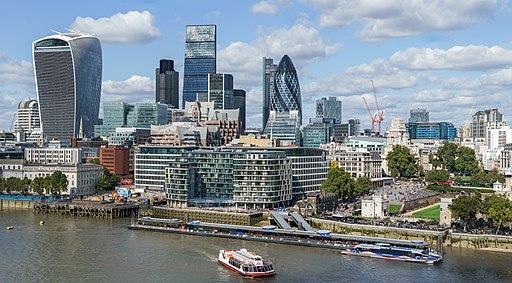 UK Green Building Council (UKGBC)has produced a guide to support the significant efforts needed to achieve our net zero ambitions, based on established industry thinking and discussions with built environment professionals.
UK Green Building Council (UKGBC)has produced a guide to support the significant efforts needed to achieve our net zero ambitions, based on established industry thinking and discussions with built environment professionals.
image: for illustration purposes only – London_Skyline_ColinandKim_Hansen_Wikimedia_Commons
… much of the sector will have to undergo some form of retrofit by 2050…
UK GBC writes:
With approximately 70% of the UK’s non-residential building stock constructed before the year 2000, if energy and carbon targets are to be achieved, and the UK’s 2050 net zero targets realised, significant energy efficiency and embodied carbon reductions are needed. As a result, much of the sector will have to undergo some form of retrofit by 2050.
Any stakeholder group with the intention of supporting the successful delivery of net-zero focussed retrofit projects will benefit from the following guidance.
The guide summarises the fundamental considerations for retrofit projects to support the drive towards net zero carbon in our existing commercial building stock. It includes:
- Definitions for light and deep retrofits
- 10 key considerations for net zero carbon focused retrofits projects to support net zero pathways and goals
- Real-world case studies, exemplifying the importance of these considerations and the benefits low carbon focused retrofits can have in the advancing net zero goals.
Commercial real estate owners and investors, working closely with their multiple advisors, property managers, facility managers, valuers and lenders, as well as their project teams, can play their part in using retrofit to drive net zero carbon outcomes by:
- Setting targets based on energy intensity metrics for all assets in their portfolio with timelines and milestones towards achieving these through asset management and retrofit plans aligned with capex budgets. Targets should be set in line with industry / sector target trajectories – such as those soon to emerge from the net zero carbon buildings verification standard (currently under development).
- Establishing and implementing portfolio-wide strategies for transition away from fossil-fuels – aligned with planned retrofit works for each asset.
- Upskilling building facilities managers to ensure the best maintenance and retrofit packages are considered to ensure decarbonisation of building operation.
- Rolling out in-use energy monitoring and reporting for the entire building portfolio and commit to sharing energy data regularly and transparently with all tenants, disclosing on an annual basis the operational performance of assets.
- Disclosing the operational energy and carbon performance of all held properties (at asset level) across their portfolios (Funds) in annual reporting – alongside transition plans to net zero aligned with TCFD reporting requirements.
- Aligning their decision making with energy performance-based ratings and away from EPCs, ahead of the BEIS Performance-Based Rating Framework coming into effect.
- Prioritising retrofit of existing assets over demolition and new build – given the substantial savings on resource use and embodied carbon.
This foundation guidance sets out to address the issue of establishing a level of consistency, but UKGBC will be producing further guidance to support the industry, focussing in more detail on the practical implications of achieving net zero focussed commercial retrofits. For the latest information find out more by going to the UKGBC Advancing Net Zero website page.
If you have any questions about this publication, any of the upcoming workstreams relating to commercial retrofit, or would like to provide feedback, please email ANZ@UKGBC.org.

